
Development and Adoption of a Water Use Plan and Organization of Water Accounting to Control the Actual Distribution of Water

Development and Adoption of a Water Use Plan
Client: OOO Tashkent —ottonTextile cluster (“—“ Cluster), Kuyi-Chirchik district, Tashkent province
Contractor: SIC ICWC
Implementation period: 06.04.-15.12.2021
Project objectives:
- Organizing efficient water use in the agricultural Cluster
- draw the layout of irrigation canals, with indication of distributing points, key intake points, and outlets to each irrigation plot, household plots and other water users;
- draft and fulfill daily water use plan for irrigation plots along the demonstration canal;
- train the Clusterís staff in making ten-day and daily water use plans.
- Arranging regular water accounting, monitoring, assessment and on-the-fly adjustment depending on water-related situation in the region;
- Developing a computer routine for water use planning;
- Analyzing and identifying challenges before planning and fulfillment of water use plans.
Work done:
A training workshop was held for hydraulic engineers/irrigation water managers in key principles of water use planning in Uzbekistan.
The layouts of seven main canals were corrected by showing reaches of the canals and also outlet points from main/inter-farm canals into the on-farm canals.


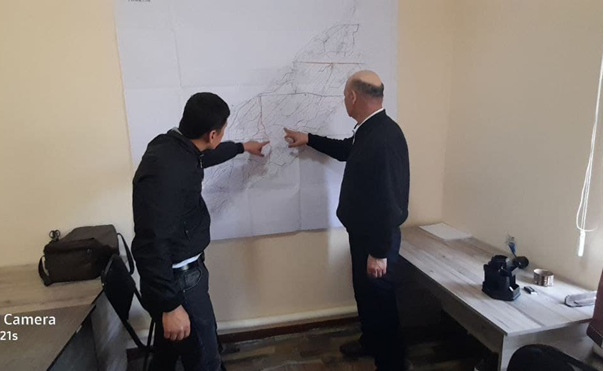
A hands-on workshop was organized for water measurement staff in drawing layouts of the on-farm canals, with indication of outlets to each irrigation plot.
Layouts have been drawn for all on-farm canals in the Cluster.
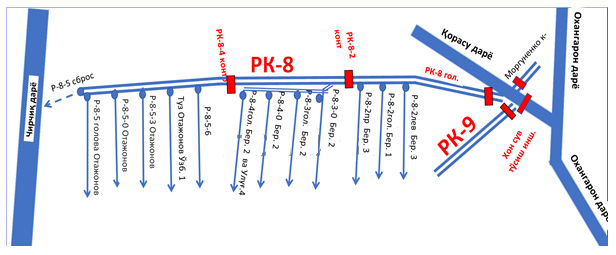
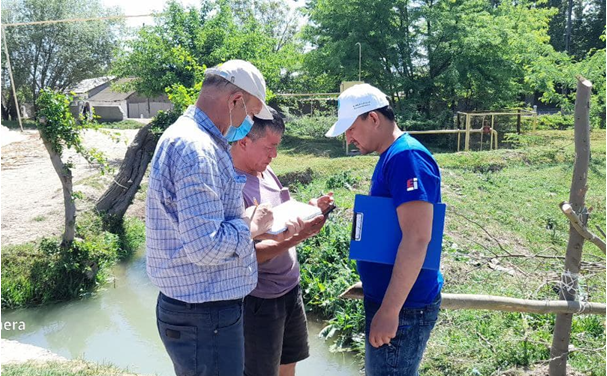
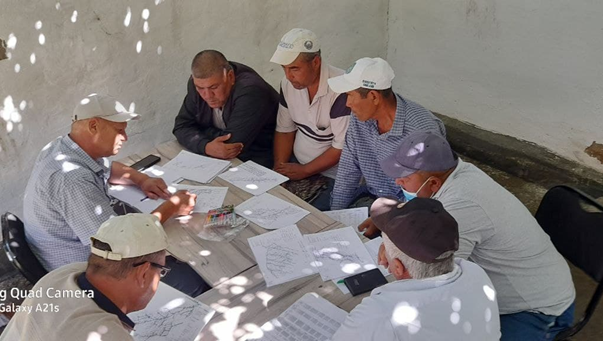
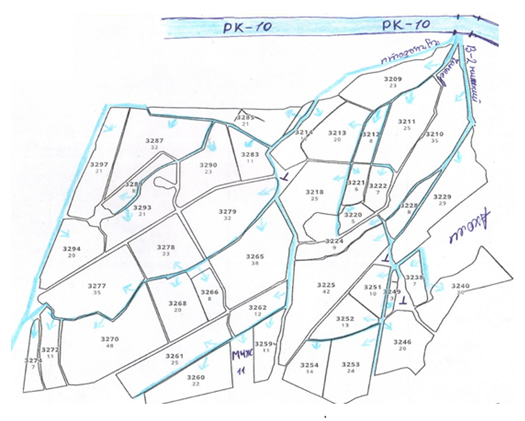
Hands on training was held for relevant staff in drafting ten-day and daily water use plans.

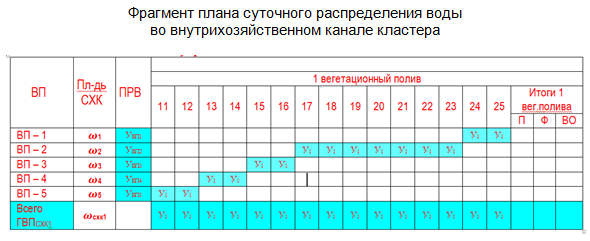
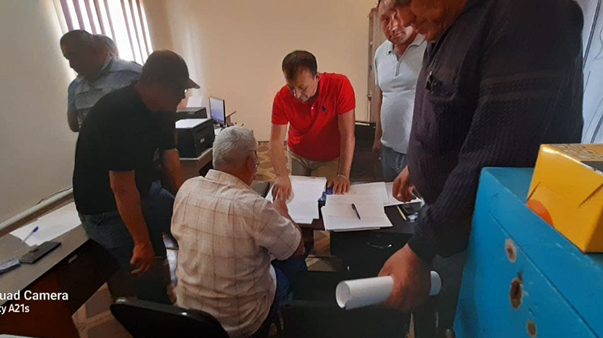

A routine (Ňxcel) was developed for planning of water use along on-farm and inter-farm canals. The routine covers the irrigation network starting from an irrigation plot to the head point of the inter-farm canal.
The water use plan for the inter-farm irrigation network is drafted by using the bottom-up approach following the irrigation network hierarchy, i.e. starts from an irrigation plot, indicating quantities and dates of irrigation water to be delivered to key and distrubution points.
Continuous water delivery is maintained at key and distribution points of the inter-farm canals, while water users along the on-farm canals get water on a rotating basis.

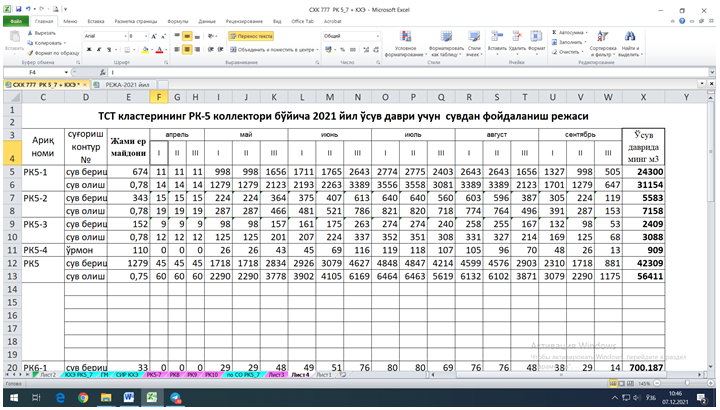
Organization of Water Accounting to Control the Actual Distribution of Water
Client: OOO Tashkent —ottonTextile cluster (“—“ Cluster), Kuyi-Chirchik district, Tashkent province
Contractor: SIC ICWC
Implementation period: 06.04.-15.12.2021
Project objectives:
- Develop recommendations on organization of water accounting;
- Establish a network of water measuring facilities along the canals in the Cluster.
Work done:
1. Studied the map of inter-farm canal network and the technical specifications of gauging stations at offtakes to farms.
2. Carried out field surveys of inter-farm canals and gauging stations. The following was found: deposition of sediments; destruction and deformation of concrete slopes among most canals; absence of level gauges or, if available, they do not correspond to the invert level. There are 203 different hydraulic structures: 14 structures serve as water distributors; 84 ones Ė used as regulators; 105 ones serve for water accounting. 80% of the inter-farm canals need repair and 50% of canals need partial reconstruction. The on-farm irrigation network has 1535 intake points, of which 92 ones are equipped with water-regulating structures and do not have gauges (53 ones are in good condition).


3. Together with water measurement staff, made control measurements of water discharge at gauging stations to check validity of discharge characteristics against technical specifications.
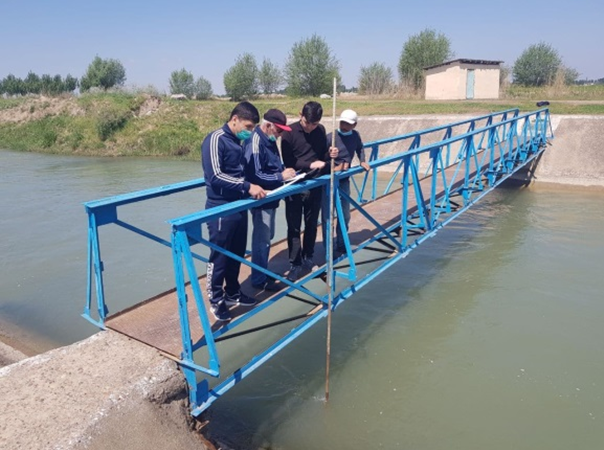
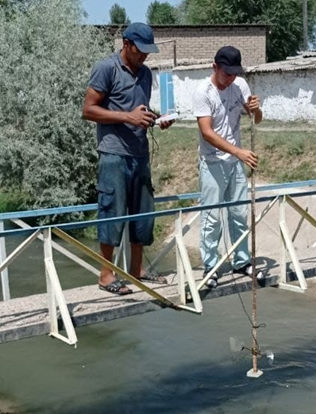
4. Held training workshop for hgydraulic engineers/water managers in measuring water discharge.
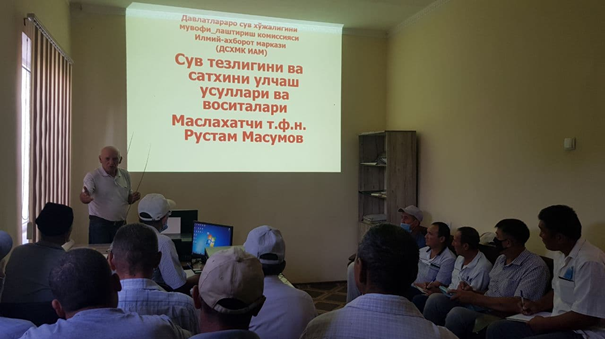
5. Developed recommendations for organization of water accounting and repair and reconstruction work at canals, including hydraulic structures and metering facilities in the Cluster.
